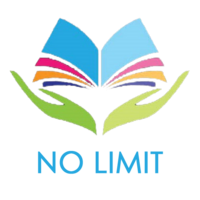For refugees who are looking to resettle in Canada (including skilled foreign workers), the Canadian government provides a variety of resettlement opportunities that can help refugees rebuild their lives in Canada. This article will discuss a few immigration programs for refugees coming from anywhere in the world to the country of Canada.
Why are Immigration Programs Important for Refugees? (Canada)
Immigration programs are important for refugees because they give refugees the opportunity to start new lives in Canada. Refugees can come from anywhere in the world and are in need of a safe haven away from their previous homes. This can be for a variety of reasons, including:
- Persecution (racial, religious, economic, etc.)
- Natural disasters
- Human rights violations
- Political instability
Once refugees are successfully resettled in Canada, they can also contribute to Canada’s well-being. Refugees can help fill labor shortages in Canada’s workforce, grow the country’s economy, increase the country’s diversity, and more.
Here are a few ways that refugees can immigrate to Canada.
Canada’s Refugee and Resettlement Humanitarian Program
Canada’s Refugee and Resettlement Humanitarian program is Canada’s main program for refugees looking to immigrate to Canada. This program has three main pathways: Government-Assisted Refugees (GAR), Private Sponsorship of Refugees (PSR), and Blended Visa Office-Referred (BVOR).
The Government-Assisted Refugees (GAR) program provides refugees with resettlement support from the government of Canada or the province of Quebec. Through the program, refugees are referred to Canada for resettlement by either the United Nations Refugee Agency (UNHCR) or another referral organization.
The Private Sponsorship of Refugees (PSR) program allows Canadians (groups of Canadians or organizations) to resettle specific individuals or families who qualify as refugees under the Refugee and Resettlement Humanitarian program.
The Blended Visa Office-Referred (BVOR) program matches refugees identified by the United Nations Refugee Agency with private sponsors in Canada.
To apply: refugees cannot directly apply for the Refugee and Resettlement Humanitarian Program. Instead, the UNHCR, along with private sponsors, identifies refugees for resettlement. Once a refugee’s case is processed and approved, they can successfully move to Canada and will even get relocation assistance from the Canadian government.
Examples of relocation assistance include:
- Helping refugees find a temporary or permanent place to live
- Welcoming refugees at the airport or other port of entry
- Assessing refugees’ needs
- Provides refugees with information and help in getting to know Canada
- Referring refugees to other federal and provincial programs, and to other settlement services
For more information on Canada’s refugee services, visit Canada’s official website.
Economic Mobility Pathways Pilot (EMPP)
The Economic Mobility Pathways Pilot (EMPP) is another way that refugees can immigrate to Canada. The Pilot focuses on skilled refugees and other displaced workers, whose skills are greatly sought after by Canadian companies and organizations. This aligns with the IRCC’s increased focus on Canada’s humanitarian and refugee immigration initiatives.
Refugees can apply for the EMPP through select economic programs (regional EMPP) or directly through the Canadian government (federal EMPP). Both the regional and federal EMPP have specific requirements for candidates based on circumstance, work experience, language skills, and more. For example, refugees must have document proof of refugee status (or be assessed/referred by one of Canada’s trusted partners. Refugees must also be admissible to Canada, meaning they are allowed to enter the country.
To apply for the regional EMPP, refugees can choose one of three programs:
- Atlantic Immigration Program (AIP)
- Provincial Nominee Program (PNP)
- Rural and Northern Immigration Program (RNIP)
Refugees need to be eligible for one of the above programs and apply first to a province, territory or RNIP community (depending on the refugee’s program of choice).
To apply for the federal EMPP, refugees must apply directly through the Canadian government. The federal EMPP includes a Job Offer and No Job Offer stream and requires refugees to meet the work experience, education and language requirements.
How Can I Immigrate to Canada as an International Worker?
With the help of No Limit to Canada, your immigration journey to Canada can start as soon as today! No Limit to Canada streamlines the Canadian immigration process by saving you money and resources, assisting with necessary immigration documents, and offering valuable advice and support from start to finish.
Give us a call at 888-391-1115 or contact us via email at info@nolimittocanada.com. We are available to answer all your questions on immigration for international workers and help you find the Canadian immigration program that fits best for you.


